Every landscape needs a plant with a bit of rambunctious zing. Purple poppy mallow (
Callirhoe involucrata), with its long, trailing stems and summerlong show of flowers, is stunning as a single specimen plant, used en masse as a ground cover or planted throughout the landscape as a unifying element. This native perennial can adapt to a wide range of growing conditions but is a standout performer in those tough spots that are sunny, hot and dry.
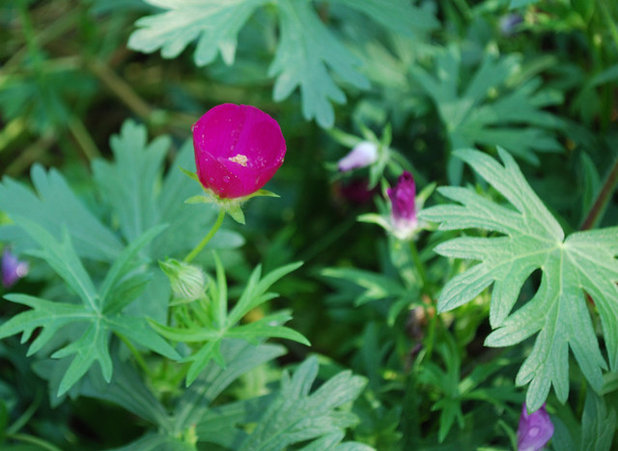
Jocelyn H. Chilvers
Botanical name: Callirhoe involucrata Common names: Purple poppy mallow, poppy mallow, prairie winecup, buffalo rose
Origin: Native to the High Plains region of the United States, from Wyoming to Texas
Where it will grow: Hardy to -30 degrees (USDA climate zones 4 to 9; find your zone)
Elevation range: Up to 7,500 feet
Water requirement: Low to moderate
Light requirement: Full sun to partial shade
Mature size: 6 to 12 inches tall and 24 to 36 inches wide
Benefits and tolerances: Purple poppy mallow tolerates sun, heat and drought; its vibrant flowers are a nectar source for native bees and butterflies — including the gray hairstreak.
Seasonal interest: Flowers early summer to fall; foliage may be evergreen in mild climates
When to plant: Spring to fall
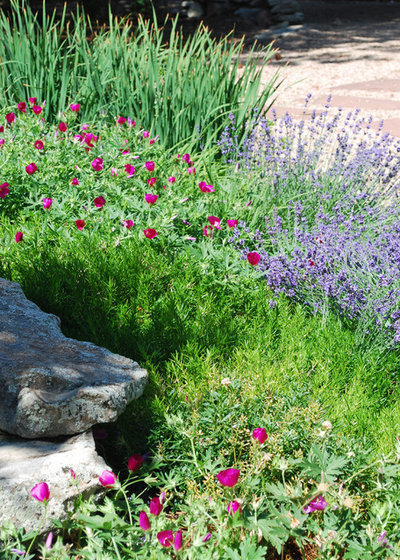
Jocelyn H. Chilvers
Distinguishing traits. The cup-shaped flowers are a luminous violet-pink hue with a white eye; they cover the plant all summer. The flowers, 1½ to 2½ inches wide, open in the morning, close again in the evening and remain closed once they’ve been pollinated.
Purple poppy mallow also has beautiful bright green foliage that’s rounded and deeply lobed, creating a lace-like effect.
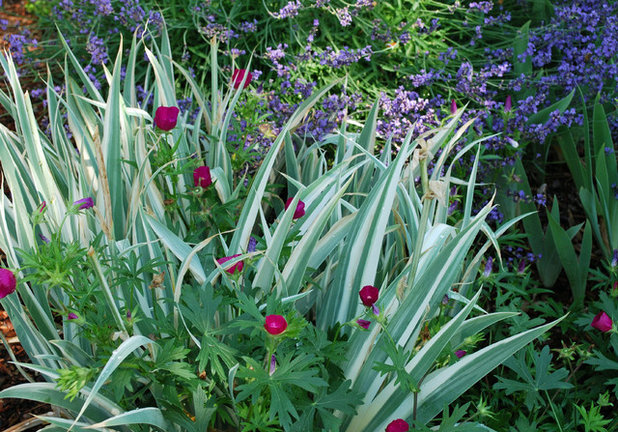
Jocelyn H. Chilvers
Purple poppy mallow is shown in this photo with variegated iris (
Iris variegata, zones 4 to 9) and ‘Hidcote’ English lavender (
Lavandula angustifolia ‘Hidcote’, zones 5 to 10).
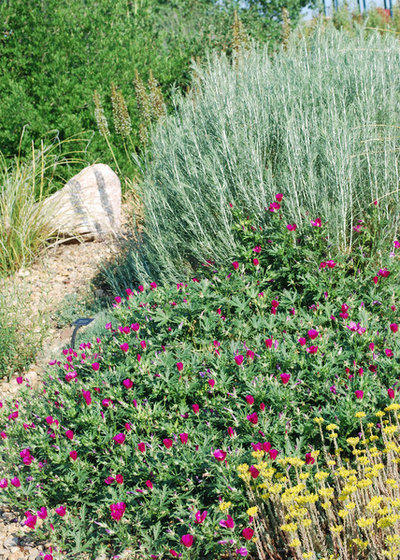
Jocelyn H. Chilvers
How to use it. At home in traditional gardens, prairie gardens and xeriscapes, purple poppy mallow looks beautiful winding through the rock garden, blanketing sunny slopes, draping over retaining walls or scrambling between taller perennials and shrubs.
Plant it with contrasting foliage textures: fine, grass-like or small. Blue and gray leaves also provide a nice contrast, as shown here, where purple poppy mallow joins dwarf rabbitbrush (
Chrysothamnus spp, zones 4 to 9) and Blue Spruce sedum (
Sedum pinifolium ‘Blue Spruce’, zones 3 to 11).
The strong flower color calls for strong playmates. Think white
whirling butterflies (
Gaura lindheimeri, zones 5 to 10)
, yellow
pineleaf penstemon (
Penstemon pinifolius ‘Mersea Yellow’, zones 4 to 9) and
blue sage (
Salvia spp).
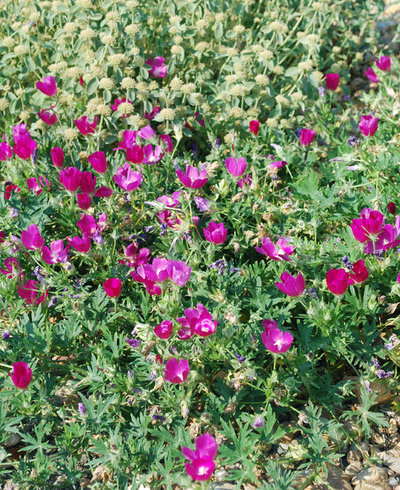
Jocelyn H. Chilvers
Planting notes. Full sun and well-drained soil (most types, including clay) are preferred. Purple poppy mallow has a large, fleshy taproot and may be difficult to transplant. However, it will self-sow and slowly spread, if you let it. Provide afternoon shade and regular moisture in desert regions





